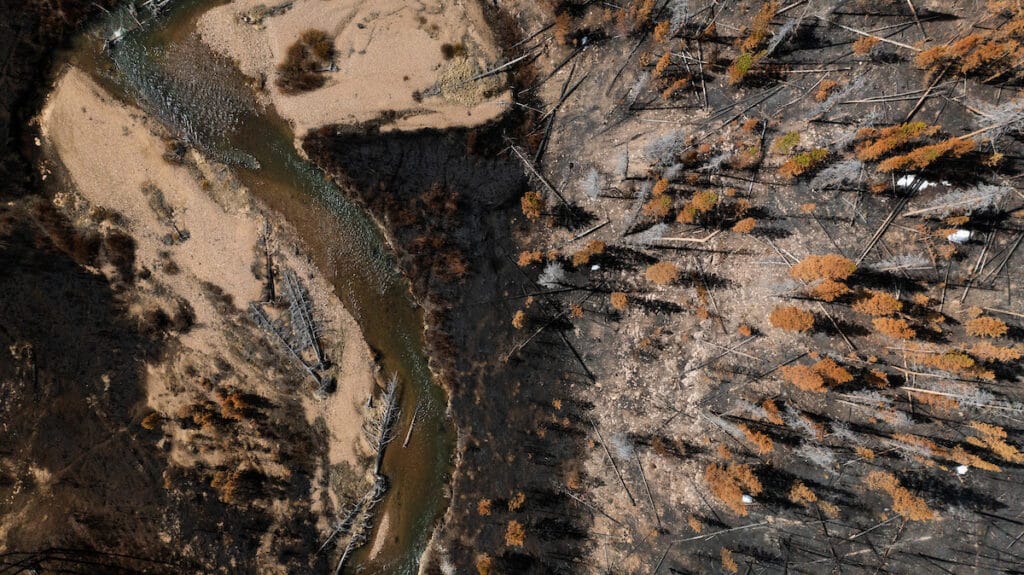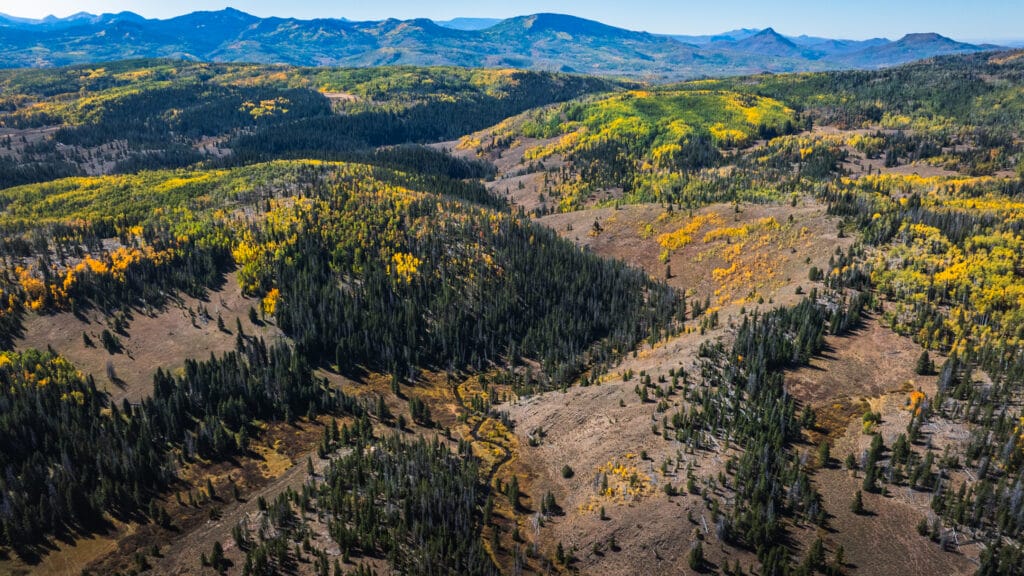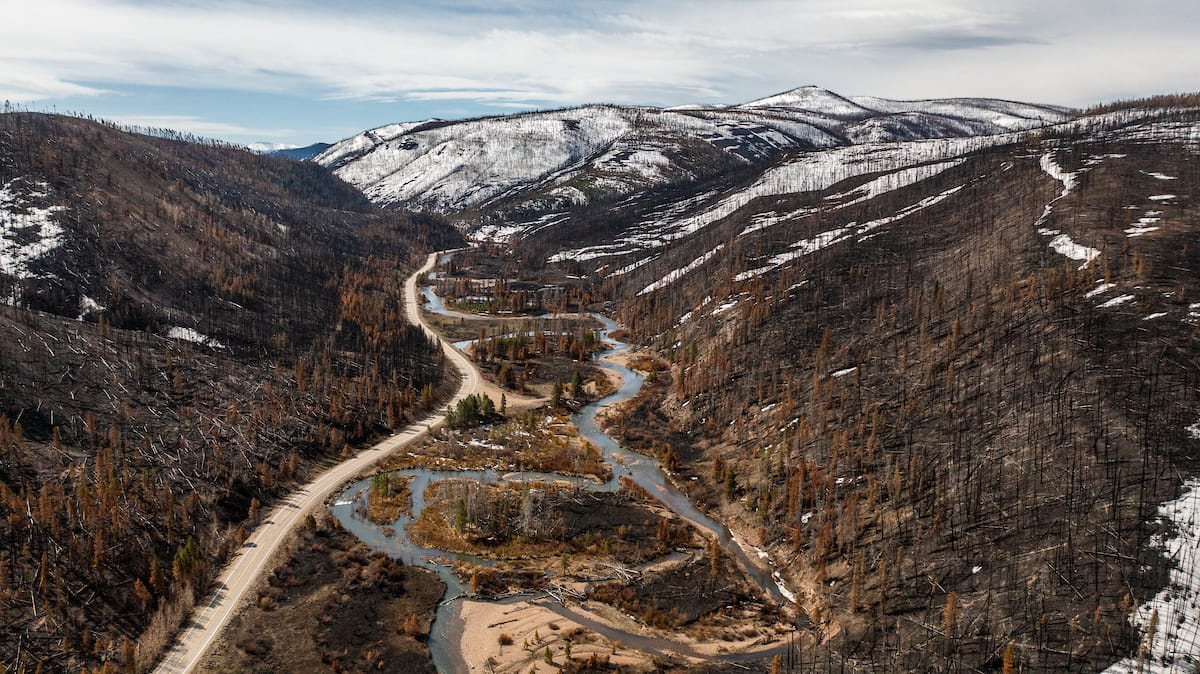Trout Unlimited (TU) is leading innovative stream restoration projects across the fire-prone Western U.S. Our skilled managers often use process-based techniques and other nature-based solutions to help rivers and streams function more naturally.
But did you know that in Wyoming, Oregon and elsewhere, TU also plays a role in active forest management by using wood products from hazardous fuels reduction projects completed by the USDA Forest Service (and other agencies and partners) to build in-stream restoration structures? By utilizing this wood as a tool for watershed restoration, TU enhances aquatic ecosystems, reduces wildfire risk, protects community water supplies, and saves money.

Typically, wildfire mitigation efforts are designed so the value of wood coming off hazardous fuels reduction projects is maximized through local wood products facilities and businesses. Wood products help sustain the forest products industry, which is critical in many of the rural communities where we work across the West. However, in some cases, wood may be too small in diameter to be useful, damaged by insects like the mountain pine beetle, dieback due to changes in local climate, or otherwise not suitable for a forest products market. In these cases, there are typically a few options: pay to masticate (“chip”) the wood, pile the material (“slash”) to burn later, or pay to haul the wood away for firewood or disposal. While these options – and others – will continue to serve a role as the need for wildfire mitigation and hazardous fuels reduction treatments increase, TU’s stream restoration projects can provide another – perhaps surprising – option for wood utilization in places where we need all options on the table.
Take Colorado, for example, where forests face growing wildfire risks from dense undergrowth and drought-stressed trees, as outlined in the Colorado State Forest Service (CSFS) 2024 Report on the Health of Colorado’s Forests: “Prolonged drought continues to stress our forests, setting the stage for insect and disease outbreaks and large, destructive wildfires.” These conditions call for proactive management to protect communities and ecosystems. TU’s projects tackle these challenges by blending fuels reduction with stream restoration, using on-site wood to create healthier watersheds and more resilient forests.

Near Telluride, Colorado, the Telluride Valley Floor project is revitalizing the San Miguel River corridor. While the stream itself has been the focus, the surrounding uplands are just as critical. Over 2,000 logs, sourced from forest thinning occurring on adjacent mountain slopes managed by the Town of Mountain Village, are being helicoptered in to build in-stream structures. These logs come from efforts to reduce wildfire risks by clearing diseased and overcrowded forest stands, improving forest health and creating defensible space around the community. This approach not only restores the wood regime in the San Miguel River but also protects long-term water quality by protecting the town and its infrastructure from wildfire. This practice will also encourage recolonization of beavers into a stream reach that lacks sufficient vegetation to support the keystone species.
In Northwest Colorado, TU is partnering with the Bureau of Land Management to repurpose wood from fuels reduction projects – originally destined for slash piles to be burned at a later date – to construct beaver dam analogues. These structures mimic natural beaver dams, slowing water flow to restore wetlands, boost biodiversity, and strengthen stream resilience. By utilizing the wood, TU transforms material that would otherwise be burned into an asset, supporting forest health and water quality.
In the Upper Gunnison River Watershed, TU is developing a project on Quartz Creek, where forest treatments for fire mitigation will yield logs and root wads, which TU can then utilize for in-stream restoration to expand aquatic habitat. This approach uses materials that might otherwise be burned or hauled away at a cost.

Stream restoration can be an important part of active forest management. Projects utilizing wood in creative ways help sustain rural economies, mitigate wildfire risks, and protect water supplies for our communities. TU’s values include being resourceful, which we describe as seeing opportunity in challenges, and delivering pragmatic, lasting solutions to projects. Our values, especially our resourcefulness, shine through in these wood utilization efforts.



